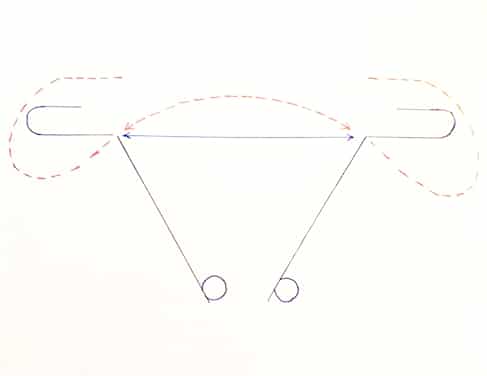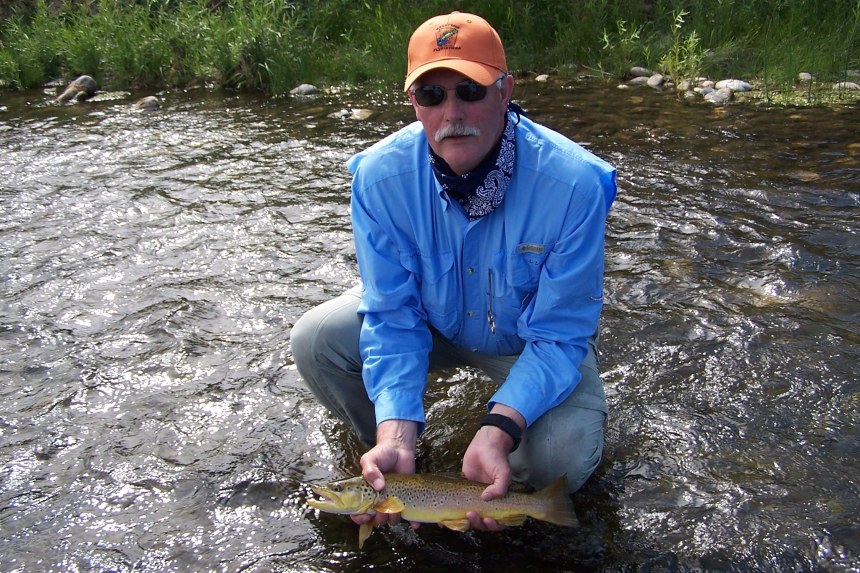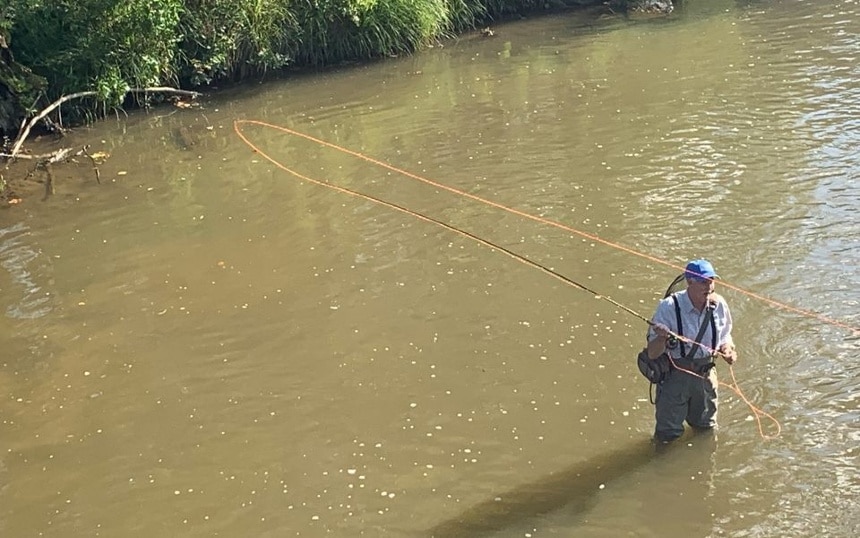Over the next few articles, I will cover fly casting essentials, the main fly casting principles, and the most important fly casting variables.
Here, we will talk about the five principles that are essential for making a good, efficient cast. These five principles are known as Gammel’s Five Essentials of Fly Casting, excerpted from “The Essentials of Fly Casting” booklet by Bill and Jay Gammel.
When teaching, I strive to have an individual follow these principles and, if possible, blend them with his or her personal style.
The First Principle
The first principle I would like to cover is moving the rod tip in a straight-line path or SLP. Below is a sketch that depicts a typical cast where the blue lines represent moving the rod tip in a straight line, and the red lines depict moving the rod tip in a domed or convex path.
The blue lines show a nice narrow loop which results in a more efficient, less air resistant, and hopefully more accurate cast.
The red lines depict a common error seen quite often where the individual moves the rod tip in a domed or convex path and the result is a more wide, open loop. This loop is more air resistant, and as a result less efficient and less accurate.
When practicing your casting, start with a short amount of line, concentrate on moving the rod tip in a straight line, and then slowly lengthen the amount of line as you become comfortable with the SLP of your rod.

The Second Principle
For the 2nd principle, let’s talk about the application of power during the casting stroke.
The power should be applied in the proper amount, slowly at first, gradually increasing to a crisp stop at the end of the stroke, which forces the rod to straighten or unload, and the loop is formed.
We should strive to have the back cast and forward cast to be a mirror image of each other.
A typical fault I see during casting analysis is the over-application of power during the final presentation cast, which can result in a tailing loop or commonly known as a “wind knot.” By applying the same amount of power while false casting during the presentation cast, this fault can be
minimized.
The Third Principle
The third principle deals with the size of the casting stroke. The casting stroke varies depending upon the length of the line to be cast. Hence, a short line uses a short-stroke, a longer line a longer stroke. As we proceed to cast a longer line, the rod will bend deeper, and we must lengthen the casting stroke to maintain the straight-line path of the rod tip. With a shorter line, the rod bends less, thus a shorter stroke is needed to maintain the straight-line path. Remember: short line – short stroke, long line – long stroke!
The Fourth Principle
The fourth principle is controlling your slack line. All slack line should be removed before beginning a cast. This can be accomplished by stripping in the slack line or by just backing up until your line is straight to the fly. Any amount of slack line present will waste a portion of the casting stroke before the rod will begin to load. As Lefty would say, you must get the end of the line moving before making a back or forward cast; hence remove the slack line.
The Fifth Principle
The fifth principle is that we need to have a pause at the end of each casting stroke. The length of the pause is proportional to the amount of line out past the rod tip. A shorter amount of line requires a shorter pause and a longer amount of line requires a longer pause.
If you hear a sound like a whip cracking when casting, then that could mean that your pause is too short. If the line is hitting the water behind you, then potentially your pause is too long.
In Summary
To review the five fly casting principles:
1. The power in the casting stroke must be applied as an acceleration to a quick stop.
2. The size of the casting stroke will vary with the amount of line past the rod tip. A short amount of line, short stroke. Longer amount of line, longer stroke.
3. The caster must strive to move the rod tip in a straight line.
4. Strive to keep slack line at a minimum.
5. The pause at the end of each stroke is proportional to the amount of line past the rod tip. Short line, short pause. Longer line, longer pause.
Certainly, any practice you can do on the grass prior to going fishing will be time well spent once you are on the water.
Tight lines,
Bob
Narrow Loops Fly Casting





